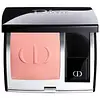What's inside
What's inside
 Key Ingredients
Key Ingredients

 Benefits
Benefits

 Concerns
Concerns

 Ingredients Side-by-side
Ingredients Side-by-side

Synthetic Fluorphlogopite
Diisostearyl Malate
EmollientDipentaerythrityl Hexahydroxystearate
EmulsifyingLauroyl Lysine
Skin ConditioningVinyl Dimethicone/Methicone Silsesquioxane Crosspolymer
Synthetic Fluorphlogopite, Diisostearyl Malate, Dipentaerythrityl Hexahydroxystearate, Lauroyl Lysine, Vinyl Dimethicone/Methicone Silsesquioxane Crosspolymer, Triethylhexanoin, Sorbitan Sesquiisostearate, Hydrogen Dimethicone, Dimethicone, Tocopherol, CI 77120, Silica, Alumina, Tin Oxide, Chlorphenesin
Synthetic Fluorphlogopite
Mica
Cosmetic ColorantLauroyl Lysine
Skin ConditioningSilica
AbrasiveZinc Stearate
Cosmetic ColorantCellulose
AbsorbentMagnesium Myristate
Octyldodecyl Stearoyl Stearate
EmollientBis-Behenyl/Isostearyl/Phytosteryl Dimer Dilinoleyl Dimer Dilinoleate
EmollientDicaprylyl Ether
EmollientKaolin
AbrasiveBoron Nitride
AbsorbentHibiscus Sabdariffa Flower Extract
Skin ConditioningIris Florentina Root Extract
MaskingWater
Skin ConditioningCaprylyl Glycol
EmollientEthylhexylglycerin
Skin ConditioningSodium Dehydroacetate
PreservativePentylene Glycol
Skin ConditioningParfum
MaskingTocopherol
AntioxidantHydrolyzed Viola Tricolor Extract
Skin Protecting1,2-Hexanediol
Skin ConditioningSodium Benzoate
MaskingPotassium Sorbate
PreservativeCI 77491
Cosmetic ColorantCI 77499
Cosmetic ColorantCI 77891
Cosmetic ColorantCI 73360
Cosmetic ColorantSynthetic Fluorphlogopite, Mica, Lauroyl Lysine, Silica, Zinc Stearate, Cellulose, Magnesium Myristate, Octyldodecyl Stearoyl Stearate, Bis-Behenyl/Isostearyl/Phytosteryl Dimer Dilinoleyl Dimer Dilinoleate, Dicaprylyl Ether, Kaolin, Boron Nitride, Hibiscus Sabdariffa Flower Extract, Iris Florentina Root Extract, Water, Caprylyl Glycol, Ethylhexylglycerin, Sodium Dehydroacetate, Pentylene Glycol, Parfum, Tocopherol, Hydrolyzed Viola Tricolor Extract, 1,2-Hexanediol, Sodium Benzoate, Potassium Sorbate, CI 77491, CI 77499, CI 77891, CI 73360
 Reviews
Reviews

Ingredients Explained
These ingredients are found in both products.
Ingredients higher up in an ingredient list are typically present in a larger amount.
This ingredient comes from a fatty acid (lauric acid) and amino acid (lysine). It is used to add a silky feel to cosmetics.
According to a manufacturer, its fatty acid base leaves a silky feeling on the skin. It also has emollient properties because of this. Emollients help soften skin by preventing water from evaporating.
Lauroyl lysine is barely soluble in water.
Learn more about Lauroyl LysineSilica, also known as silicon dioxide, is a naturally occurring mineral. It is used as a fine, spherical, and porous powder in cosmetics.
Though it has exfoliant properties, the function of silica varies depending on the product.
The unique structure of silica enhances the spreadability and adds smoothness, making it a great texture enhancer.
It is also used as an active carrier, emulsifier, and mattifier due to its ability to absorb excess oil.
In some products, tiny microneedles called spicules are made from silica or hydrolyzed sponge. When you rub them in, they lightly polish away dead skin layers and enhance the penetration of active ingredients.
Learn more about SilicaSynthetic Fluorphlogopite is the synthethic version of mica. It consists of fluorine, aluminum and silicate.
Synthetic Fluorphlogopite is used to add volume to products.
It is considered non-irritating on the skin.
Learn more about Synthetic FluorphlogopiteTocopherol (also known as Vitamin E) is a common antioxidant used to help protect the skin from free-radicals and strengthen the skin barrier. It's also fat soluble - this means our skin is great at absorbing it.
Vitamin E also helps keep your natural skin lipids healthy. Your lipid skin barrier naturally consists of lipids, ceramides, and fatty acids. Vitamin E offers extra protection for your skin’s lipid barrier, keeping your skin healthy and nourished.
Another benefit is a bit of UV protection. Vitamin E helps reduce the damage caused by UVB rays. (It should not replace your sunscreen). Combining it with Vitamin C can decrease sunburned cells and hyperpigmentation after UV exposure.
You might have noticed Vitamin E + C often paired together. This is because it is great at stabilizing Vitamin C. Using the two together helps increase the effectiveness of both ingredients.
There are often claims that Vitamin E can reduce/prevent scarring, but these claims haven't been confirmed by scientific research.
Learn more about Tocopherol